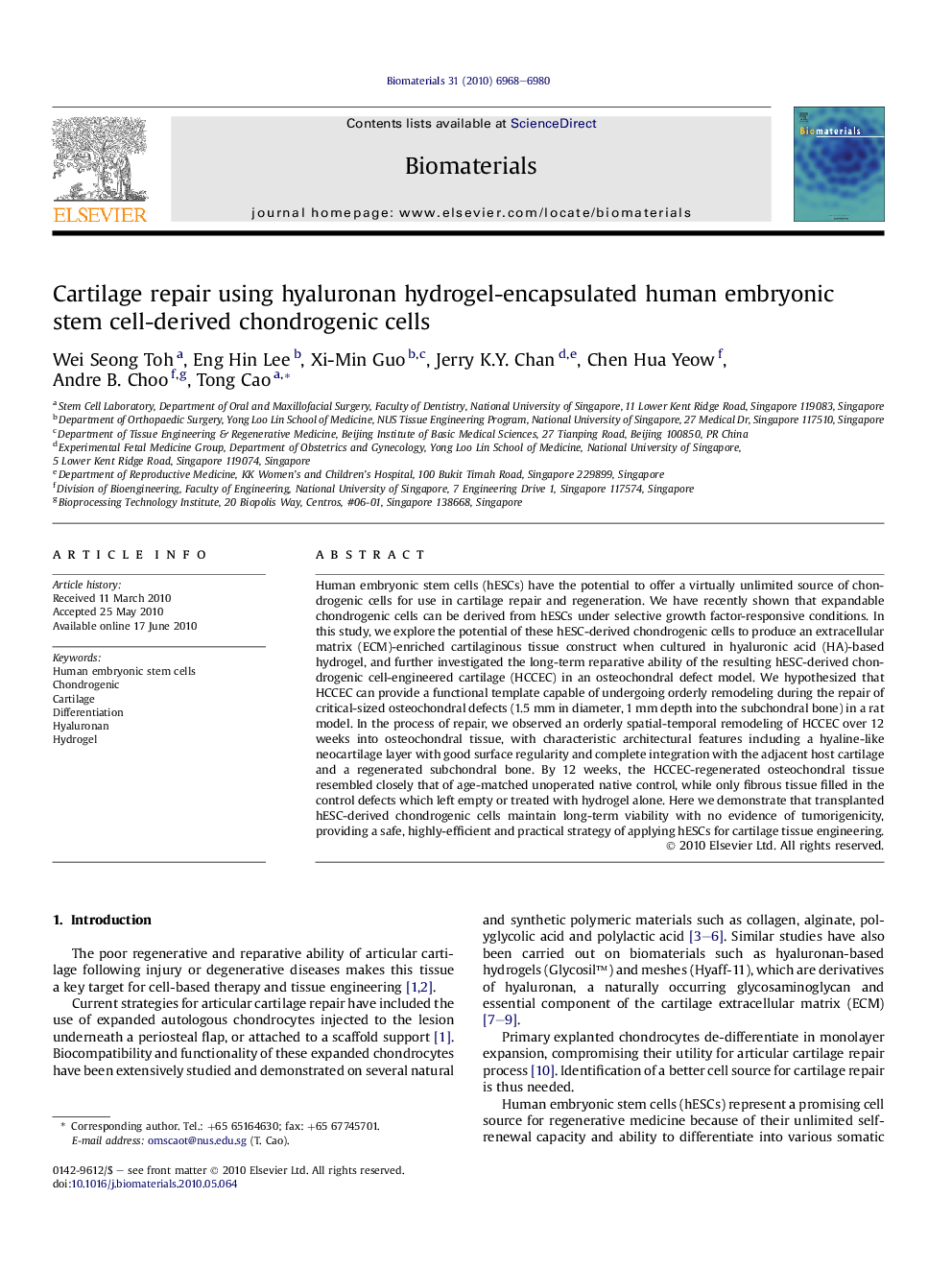| Article ID | Journal | Published Year | Pages | File Type |
|---|---|---|---|---|
| 8341 | Biomaterials | 2010 | 13 Pages |
Human embryonic stem cells (hESCs) have the potential to offer a virtually unlimited source of chondrogenic cells for use in cartilage repair and regeneration. We have recently shown that expandable chondrogenic cells can be derived from hESCs under selective growth factor-responsive conditions. In this study, we explore the potential of these hESC-derived chondrogenic cells to produce an extracellular matrix (ECM)-enriched cartilaginous tissue construct when cultured in hyaluronic acid (HA)-based hydrogel, and further investigated the long-term reparative ability of the resulting hESC-derived chondrogenic cell-engineered cartilage (HCCEC) in an osteochondral defect model. We hypothesized that HCCEC can provide a functional template capable of undergoing orderly remodeling during the repair of critical-sized osteochondral defects (1.5 mm in diameter, 1 mm depth into the subchondral bone) in a rat model. In the process of repair, we observed an orderly spatial-temporal remodeling of HCCEC over 12 weeks into osteochondral tissue, with characteristic architectural features including a hyaline-like neocartilage layer with good surface regularity and complete integration with the adjacent host cartilage and a regenerated subchondral bone. By 12 weeks, the HCCEC-regenerated osteochondral tissue resembled closely that of age-matched unoperated native control, while only fibrous tissue filled in the control defects which left empty or treated with hydrogel alone. Here we demonstrate that transplanted hESC-derived chondrogenic cells maintain long-term viability with no evidence of tumorigenicity, providing a safe, highly-efficient and practical strategy of applying hESCs for cartilage tissue engineering.
